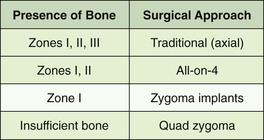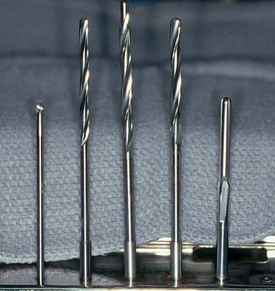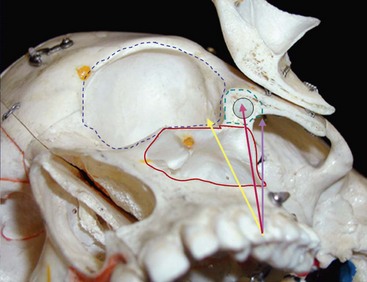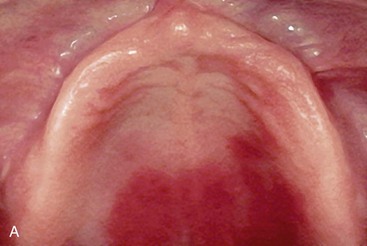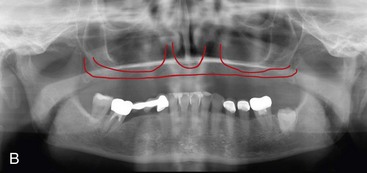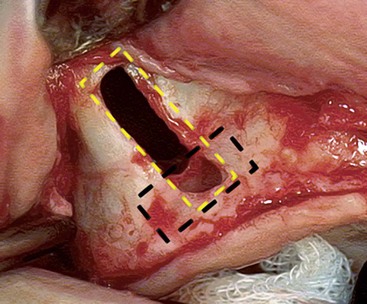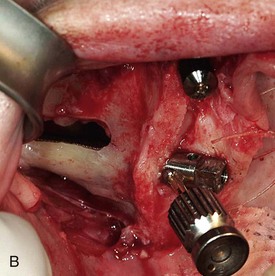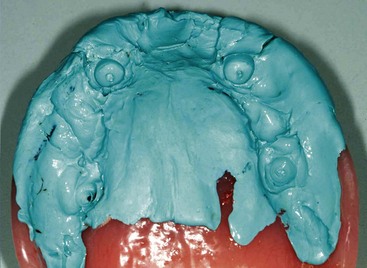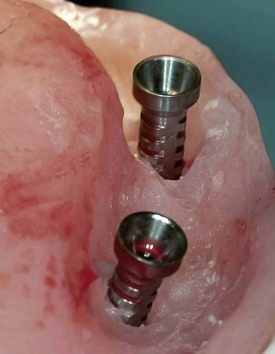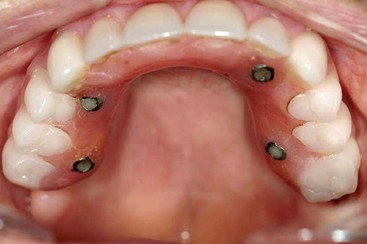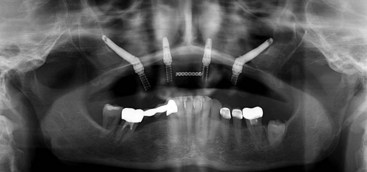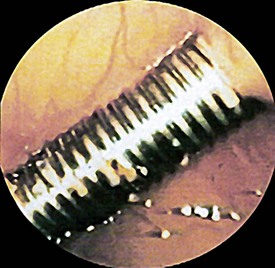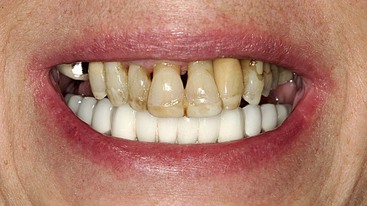CHAPTER 13 Case Presentations
Immediate-Loading Zygoma Implant
Immediate-Load Zygoma Protocol
The zygoma implant is unique because it has an angulated platform as well as two different length diameters. The zygoma concept is considered in patients who have zone I bone only in their edentulous maxilla (Figure 13-1).
Zygomatic implant specifications include:

FIGURE 13-2 The zygomatic implant has two distinct diameters: 5 mm at the crest and 4 mm at the apical half.
(Courtesy Nobel Biocare, Yorba Linda, Calif.)
The implant is generally placed between the first and second bicuspid position and is angled approximately 45° posteriorly as it traverses through the maxillary sinus and enters the body of the os zygomaticus. This is the only quad-cortically stabilized implant (Figures 13-4 to 13-6).

FIGURE 13-7 The quad-cortical stabilization of the zygomatic implants are at points 1, 2, 3, and 4.
(Courtesy Nobel Biocare, Yorba Linda, Calif.)
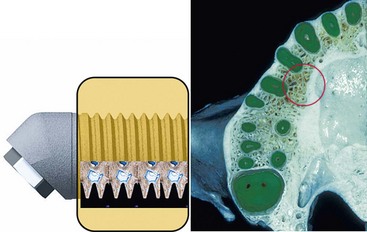
FIGURE 13-9 The crestal osteotomy is initiated between the first and second maxillary bicuspid region.
(Courtesy Nobel Biocare, Yorba Linda, Calif.)
The three potential trajectories are:
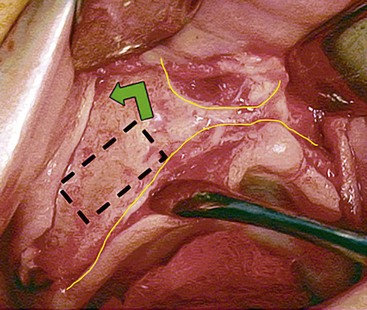
FIGURE 13-12 A full-thickness mucoperiosteal flap is raised, exposing the lateral maxillary wall.
A modified sinus opening is made.
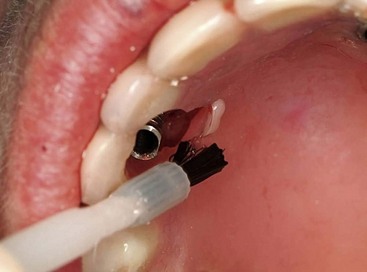
FIGURE 13-16 Luting the temporary titanium cylinders to the denture base using fast-setting acrylic.
Zygoma Concept: Immediate Loading of Failing Existing Teeth and Implants
A 47-year-old woman presented with failing implants at positions 6 and 10 as well as failing maxillary dentition. Clinical examination revealed asymmetric bone loss around the existing maxillary dentition and the presence of peri-implantitis of implant numbers 6 and 10. During animation, the patient displayed her maxillary-free gingival contour, which had to be considered in planning the transition line of the final prosthesis. Evaluation of the preoperative panoramic radiograph demonstrated zones I and II bone and limited zone III bone in the posterior maxilla (Figures 13-21 to 13-23).
Stay updated, free dental videos. Join our Telegram channel

VIDEdental - Online dental courses


